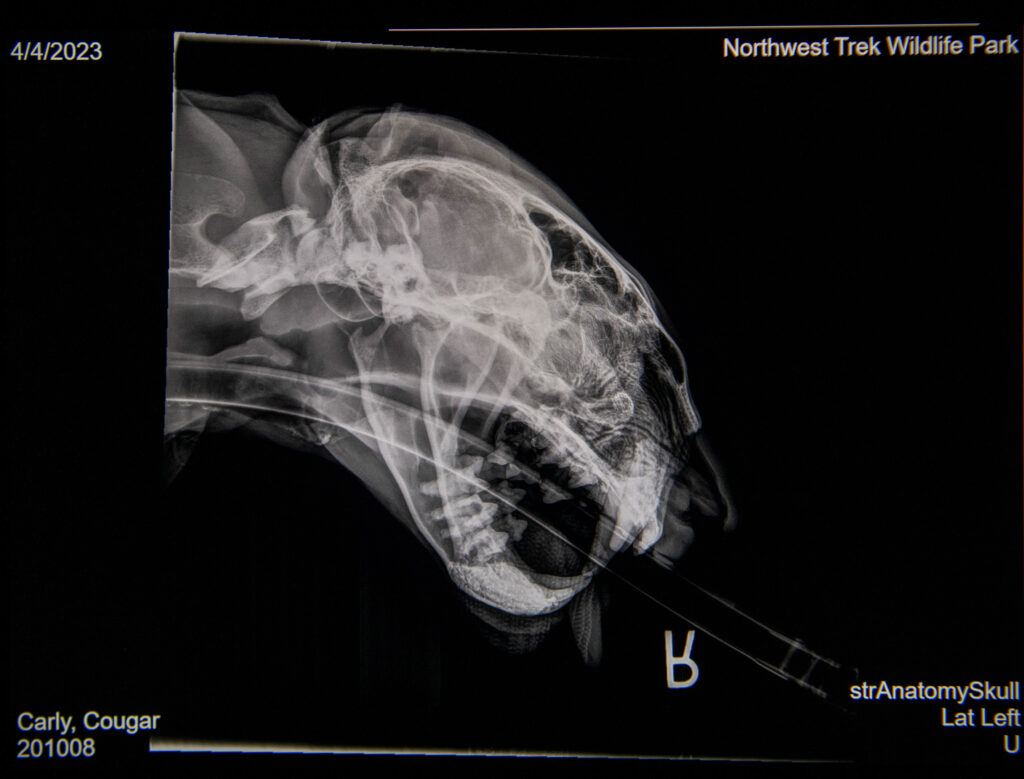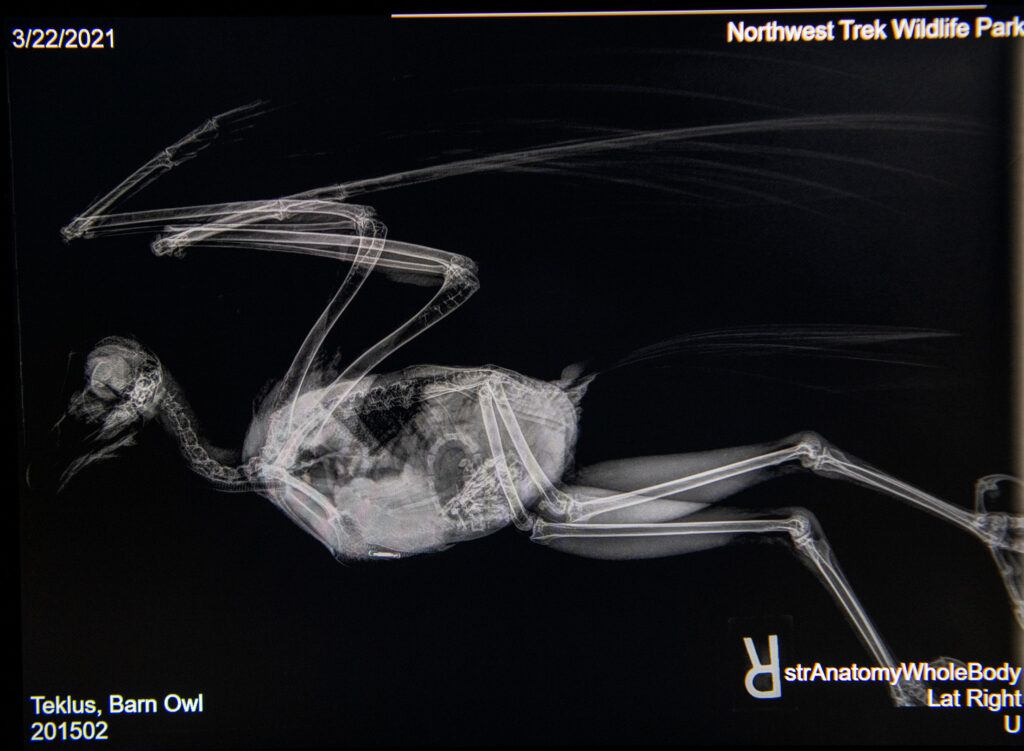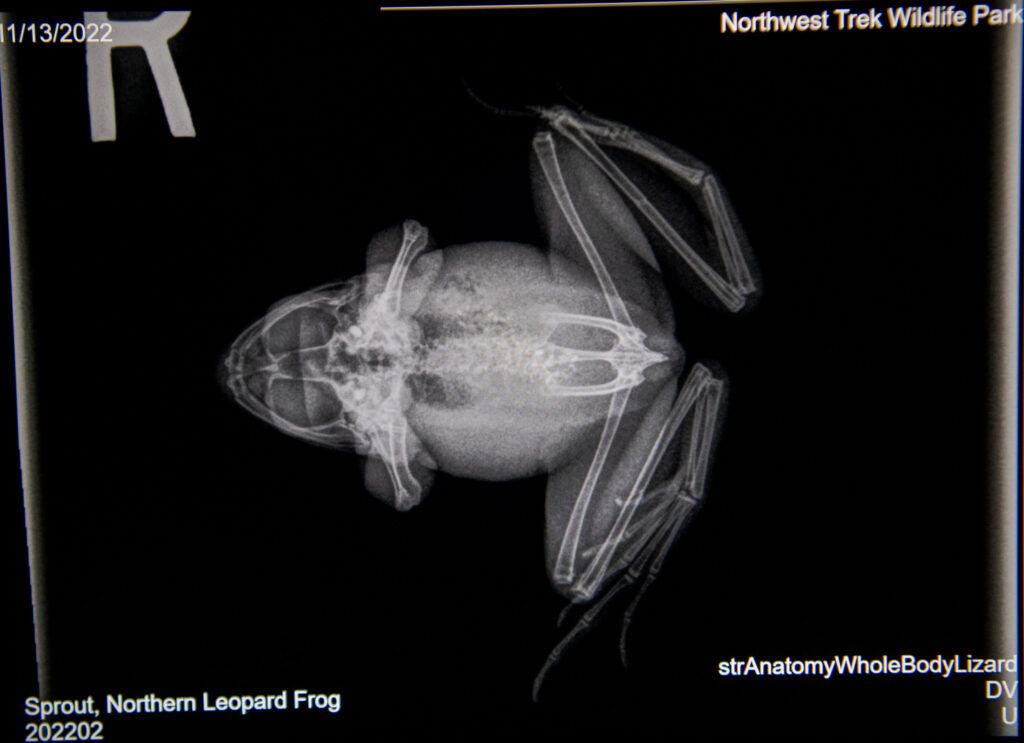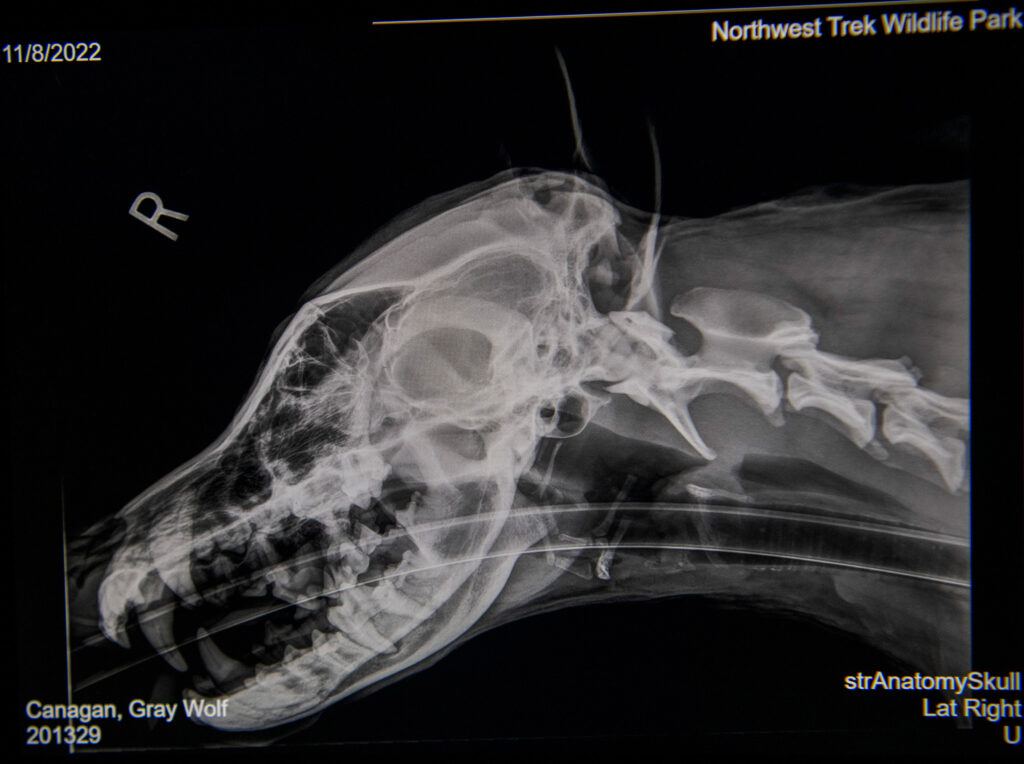Black cats, pumpkins, ghosts… skulls and skeletons. They’re all symbols of the Halloween season. We asked Northwest Trek’s Head Veterinarian, Dr. Allison Case, to give us an “inside” look at a few of the wildlife park’s animals and their not-so-spooky skeletons. Dr. Case regularly takes radiographs (X-rays) of the animals to assess their health and care for them.
Carly the Cougar

Check out Carly the cougar’s skull and teeth! Cougars have long canine teeth that are extremely sharp and can cut through bone, meat, and tendons.
Debunking the myth:
Q: Do cougars stalk and attack humans?
A: Cougars are stalking predators, but cougar attacks on humans are rare.
Teklus the Barn Owl

In this image, you can see the fine feathers of Teklus the barn owl. You can also see how long a barn owl’s legs are – useful for reaching into long grass while hunting.
Meet Teklus at night when he’s awake during Northwest Trek’s annual nighttime Hoot ‘n’ Howl event Oct. 13-14 and Oct. 20-21. The special barn owl keeper chat will be each night at 6:30 p.m.
Debunking the myth:
Q: Do owls hoot to ward off evil?
A: No, owls hoot to communicate with other owls.
Sprout the Northern Leopard Frog

Sprout the Northern leopard frog lives in the Cheney Discovery Center at Northwest Trek. Northern leopard frogs are endangered in Washington, and Sprout is an ambassador for his wild counterparts. In this radiograph, you can see his long hind legs that are specialized for leaping.
Debunking the myth:
Q: Will you get warts if you touch a frog?
A: No, there are no amphibians that give you warts.
Canagan the Gray Wolf

During Canagan the wolf’s routine exam, Northwest Trek’s veterinarian cleaned his teeth. Radiographs like this one help the healthcare team see the roots of Canagan’s teeth, and they can reference them in the future to see if anything has changed in his mouth.
Debunking the myth:
Q: Are wolves dangerous to humans?
A: No, there are only a few cases where wolves have attacked humans in the last 100 years in North America.